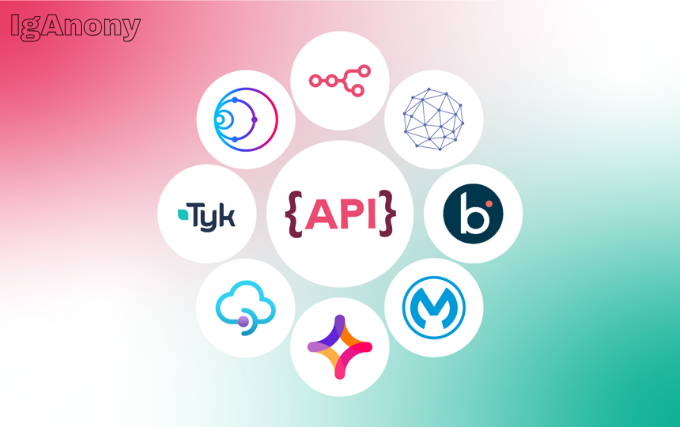The digital transformation of human resources and international employment services has reached a critical inflection point, where traditional manual processes are being replaced by sophisticated, automated systems. Modern EOR platforms are leading this transformation by leveraging advanced API architectures, machine learning capabilities, and seamless integration frameworks to deliver unprecedented efficiency and accuracy in global employment management. This technological evolution is not just improving existing processes – it’s enabling entirely new business models and operational capabilities that were previously impossible.
Technical Overview of EOR Platform Architectures
Modern EOR platforms are built on cloud-native, microservices architectures that provide the scalability, reliability, and flexibility required for managing complex international employment operations. These platforms typically employ a distributed system design with multiple specialized services handling different aspects of employment management, from payroll processing to compliance monitoring.
The core architecture usually consists of several key components: a central data management layer that maintains employee records, compensation data, and compliance information; processing engines that handle payroll calculations, tax computations, and benefits administration; compliance monitoring systems that track regulatory requirements and flag potential issues; and integration layers that connect with external systems and third-party services.
Database design in modern EOR platforms emphasizes both performance and compliance, with data partitioning strategies that ensure efficient processing while maintaining strict data sovereignty requirements. Many platforms implement multi-tenant architectures with sophisticated isolation mechanisms to ensure client data remains secure and segregated while enabling efficient resource utilization.
The event-driven architecture pattern is commonly employed to manage the complex workflows involved in international employment. Events such as employee onboarding, payroll processing, or compliance updates trigger automated workflows that can span multiple systems and services, ensuring consistent and timely processing of employment-related activities.
Containerization and orchestration technologies like Docker and Kubernetes enable these platforms to scale dynamically based on demand, handle peak processing loads during payroll periods, and maintain high availability across multiple geographic regions. This infrastructure approach also facilitates rapid deployment of updates and new features without disrupting ongoing operations.
API gateway patterns are implemented to manage access control, rate limiting, and monitoring of API usage, ensuring that integrations with client systems remain stable and performant even under high load conditions. These gateways also provide the security layer necessary for handling sensitive employment and financial data across international boundaries.
API Capabilities and Integration Possibilities
The API capabilities of modern EOR platforms have evolved to support comprehensive integration scenarios that enable seamless data flow between different business systems. RESTful API designs provide intuitive, resource-based interfaces for managing employee data, while GraphQL implementations offer more flexible query capabilities for complex data retrieval scenarios.
Employee lifecycle management APIs enable complete automation of onboarding and offboarding processes. These APIs can create employee records, manage document collection and verification, handle equipment provisioning, and coordinate access provisioning across multiple systems. Integration with identity management systems ensures that user accounts and permissions are properly managed throughout the employment lifecycle.
Payroll and compensation APIs provide real-time access to salary information, bonus calculations, and benefits administration. These interfaces enable integration with financial planning systems, budgeting tools, and executive dashboards that require up-to-date compensation data. Advanced APIs also support complex compensation structures including equity participation, commission calculations, and performance-based incentives.
Compliance and reporting APIs deliver automated access to regulatory compliance data, audit trails, and statutory reporting requirements. These interfaces enable integration with enterprise governance systems, risk management platforms, and financial reporting tools. Real-time compliance monitoring APIs can trigger alerts and automated responses when potential compliance issues are detected.
Time and attendance integration capabilities connect EOR platforms with various time tracking systems, project management tools, and workforce management solutions. These integrations ensure accurate payroll processing while providing visibility into productivity metrics and resource utilization across distributed teams.
Benefits administration APIs enable integration with insurance providers, retirement plan administrators, and other benefits providers, automating enrollment processes and ensuring accurate deductions and contributions. These interfaces also support employee self-service capabilities through integration with mobile applications and employee portals.
Automation of Payroll and Compliance Processes
Automation has transformed payroll and compliance processes from error-prone, time-intensive manual activities into streamlined, accurate, and reliable operations. Modern EOR platforms implement sophisticated automation engines that handle complex calculations, regulatory requirements, and exception management with minimal human intervention.
Payroll automation begins with automated data collection from multiple sources, including time tracking systems, HR information systems, and employee self-service portals. Machine learning algorithms validate data consistency and flag anomalies for review, significantly reducing processing errors and cycle times.
Tax calculation automation handles the complexity of international tax requirements, automatically applying the correct tax rates, deductions, and credits based on employee location, compensation structure, and applicable tax treaties. These systems maintain up-to-date tax tables for multiple jurisdictions and automatically adjust calculations when regulatory changes occur.
Compliance automation monitors employment practices against regulatory requirements in real-time, automatically flagging potential issues such as working time violations, missing documentation, or benefit enrollment deadlines. Automated workflows can trigger corrective actions, notify relevant stakeholders, and maintain audit trails for regulatory reporting.
Banking and payment automation ensures timely and accurate salary disbursement across multiple countries and currencies. These systems integrate with local banking networks, handle currency conversions, and manage the complex routing required for international payments. Automated reconciliation processes verify payment accuracy and flag discrepancies for investigation.
Document generation automation produces employment contracts, payslips, tax documents, and regulatory filings with consistent formatting and accurate data population. Template management systems ensure that documents comply with local legal requirements while maintaining brand consistency and corporate standards.
Exception handling automation manages the inevitable edge cases and special situations that arise in international employment. Rule-based engines can automatically resolve common exceptions, escalate complex issues to human reviewers, and maintain detailed logs of all exception handling activities.
HRIS Integration Capabilities
Human Resources Information System integration represents one of the most critical capabilities of modern EOR platforms, enabling seamless data flow between core HR systems and international employment operations. These integrations eliminate duplicate data entry, ensure data consistency, and provide unified reporting across global operations.
Employee master data synchronization ensures that core employee information remains consistent across all systems. This includes personal information, job details, organizational assignments, and contact information. Bidirectional synchronization capabilities ensure that updates made in either system are reflected everywhere, maintaining data integrity across the entire HR technology stack.
Organization structure integration enables EOR platforms to understand reporting relationships, department assignments, and cost center allocations from the primary HRIS. This integration ensures that payroll costs are properly allocated and that management reporting reflects the correct organizational structure.
Performance management integration connects performance ratings, goal achievements, and development plans with compensation decisions and career progression activities managed through the EOR platform. This integration enables consistent performance-based compensation management across global teams.
Learning and development integration ensures that training requirements, certifications, and skill assessments from the HRIS are reflected in the EOR platform’s compliance monitoring and career development features. This integration is particularly important for maintaining professional certifications and regulatory training requirements.
Talent acquisition integration streamlines the process of converting candidates to employees by automatically transferring offer details, start dates, and onboarding information from recruitment systems to the EOR platform. This integration reduces time-to-productivity for new international hires.
Benefits integration synchronizes benefit elections, life events, and dependent information between HRIS and EOR systems, ensuring consistent benefits administration across all employee populations regardless of employment structure.
Data Security and Encryption Standards
Data security in EOR platforms requires sophisticated approaches to protect sensitive employment and financial information while enabling efficient processing and integration capabilities. These platforms typically implement multiple layers of security controls to ensure comprehensive protection against various threat vectors.
Encryption at rest ensures that all stored data is protected using strong encryption algorithms, with key management systems that provide role-based access to decryption capabilities. Database-level encryption protects against unauthorized access to storage systems, while file-level encryption secures documents and attachments.
Encryption in transit protects data during transmission between systems, using TLS encryption for API communications and secure file transfer protocols for batch data exchanges. End-to-end encryption ensures that sensitive data remains protected throughout its journey from source systems to final destinations.
Access control systems implement role-based permissions with fine-grained access controls that ensure users can only access data appropriate to their responsibilities. Multi-factor authentication, single sign-on integration, and session management capabilities provide additional layers of access security.
Data sovereignty and residency controls ensure that employee data remains within appropriate geographic boundaries as required by various privacy regulations. These controls may include data partitioning by country, region-specific data processing rules, and restricted data transfer capabilities.
Audit logging and monitoring systems track all data access, modifications, and system activities, providing comprehensive audit trails for compliance and security monitoring. Automated alerting systems notify security teams of suspicious activities or potential security breaches.
Privacy controls implement data subject rights required by regulations like GDPR, including right of access, right to rectification, right to erasure, and data portability. These controls often include automated workflows for processing privacy requests and maintaining consent records.
Real-Time Reporting and Analytics Features
Real-time reporting and analytics capabilities transform raw employment data into actionable business intelligence, enabling organizations to make informed decisions about their global workforce strategies. Modern EOR platforms provide comprehensive analytics that go far beyond traditional payroll reporting.
Operational dashboards provide real-time visibility into key performance indicators such as payroll processing status, compliance monitoring results, and employee lifecycle metrics. These dashboards enable proactive management of international employment operations and quick identification of potential issues.
Financial analytics provide detailed insights into global employment costs, including salary expenses, benefits costs, tax obligations, and administrative fees. Cost allocation capabilities enable accurate project costing and budget management across distributed teams. Currency impact analysis helps organizations understand the financial implications of exchange rate fluctuations.
Compliance analytics monitor regulatory adherence across multiple jurisdictions, providing early warning systems for potential compliance issues. Trend analysis identifies patterns in compliance metrics that may indicate systemic problems or process improvements opportunities.
Workforce analytics provide insights into employee demographics, retention rates, performance metrics, and career progression patterns across global teams. These analytics enable better workforce planning and talent management strategies for international operations.
Predictive analytics leverage machine learning algorithms to forecast future trends in employment costs, compliance risks, and workforce requirements. These capabilities enable proactive planning and risk mitigation strategies rather than reactive responses to emerging issues.
Custom reporting capabilities enable organizations to create specialized reports that meet their unique business requirements. Self-service report building tools allow business users to create and modify reports without requiring technical support, improving agility and reducing dependence on IT resources.
Machine Learning Applications in Compliance Monitoring
Machine learning technologies are revolutionizing compliance monitoring in EOR platforms, enabling proactive identification of potential issues and automated resolution of routine compliance tasks. These applications go beyond simple rule-based monitoring to provide intelligent, adaptive compliance management.
Anomaly detection algorithms analyze patterns in employee data, payroll transactions, and compliance metrics to identify unusual activities that may indicate errors or compliance violations. These systems learn from historical data to improve their accuracy over time and reduce false positive alerts.
Predictive compliance modeling uses machine learning to forecast potential compliance issues before they occur. By analyzing factors such as regulatory changes, employee behavior patterns, and operational metrics, these models can identify employees or situations at high risk for compliance violations.
Natural language processing capabilities enable automated analysis of regulatory updates and policy changes, automatically identifying requirements that may impact existing compliance procedures. These systems can flag relevant changes and suggest necessary procedural updates to maintain compliance.
Document classification and extraction systems use machine learning to automatically process employment documents, contracts, and regulatory filings. These systems can identify document types, extract key information, and flag documents that may be missing required elements or contain potential compliance issues.
Risk scoring algorithms evaluate multiple factors to assign compliance risk scores to employees, departments, or operational activities. These scores enable risk-based monitoring approaches that focus attention on the highest-risk areas while reducing oversight burden on low-risk activities.
Workflow optimization uses machine learning to identify inefficiencies in compliance processes and suggest improvements. These systems can recommend changes to approval workflows, document routing, and exception handling procedures based on analysis of historical process performance.
Technical Scalability Considerations
Scalability in EOR platforms must address both technical performance requirements and business growth scenarios. These platforms need to handle increasing numbers of employees, expanding geographic coverage, and growing transaction volumes while maintaining performance and reliability standards.
Horizontal scaling architectures enable platforms to add processing capacity by deploying additional service instances rather than upgrading existing hardware. Microservices designs facilitate this approach by allowing individual service components to scale independently based on demand patterns.
Database scaling strategies include read replicas for improved query performance, data partitioning for better resource utilization, and caching layers for frequently accessed data. These approaches ensure that database performance remains consistent as data volumes grow.
Geographic distribution capabilities enable EOR platforms to deploy processing resources close to their users and data sources, reducing latency and improving user experience. Content delivery networks and edge computing resources further enhance performance for global user bases.
Load balancing and auto-scaling capabilities automatically adjust resource allocation based on current demand, ensuring optimal performance during peak processing periods while minimizing costs during low-activity periods. These capabilities are particularly important for handling periodic payroll processing loads.
Performance monitoring and optimization tools continuously assess system performance and identify potential bottlenecks before they impact user experience. Automated performance tuning capabilities can adjust system configuration parameters to maintain optimal performance as usage patterns evolve.
Disaster recovery and business continuity planning ensure that EOR platforms can maintain operations even in the face of significant infrastructure failures. Multi-region deployments, automated failover capabilities, and comprehensive backup strategies protect against various disaster scenarios.
How Technology Transforms Traditional Employment Services
The technological transformation of employment services represents a fundamental shift from manual, paper-based processes to intelligent, automated systems that provide superior accuracy, efficiency, and insight capabilities. This transformation is enabling new business models and service delivery approaches that were previously impossible.
Traditional employment services relied heavily on manual processes, paper documentation, and periodic batch processing that introduced delays, errors, and limited visibility into operations. Modern technology platforms eliminate most manual intervention while providing real-time processing capabilities and comprehensive audit trails.
The shift from reactive to proactive service delivery is enabled by predictive analytics and automated monitoring systems that identify potential issues before they impact employees or clients. This proactive approach improves service quality while reducing the cost and complexity of issue resolution.
Self-service capabilities enabled by modern platforms empower employees to manage many aspects of their employment relationship independently, reducing administrative burden while improving employee satisfaction. Mobile applications and web portals provide 24/7 access to employment information and services.
Integration capabilities enable employment services to become part of broader business ecosystems rather than standalone functions. This integration provides better visibility into workforce costs and performance while enabling more sophisticated workforce planning and management strategies.
Data-driven decision making is facilitated by comprehensive analytics and reporting capabilities that provide insights previously unavailable through traditional manual processes. Organizations can now make informed decisions about global workforce strategies based on real-time data and predictive analytics.
The transformation also enables new service delivery models such as outcome-based pricing, where service providers can offer guarantees around compliance, processing times, and accuracy levels. These models align provider incentives with client success and enable more strategic partnerships.
Technology has also democratized access to sophisticated employment services, enabling small and medium-sized businesses to access the same level of international employment capabilities previously available only to large enterprises. Cloud-based delivery models eliminate the need for significant upfront investments while providing enterprise-grade capabilities.
Conclusion
In conclusion, the technological transformation of EOR platforms represents a fundamental shift in how international employment services are delivered and consumed. Advanced API architectures, automation capabilities, and intelligent analytics are not just improving existing processes – they’re enabling entirely new approaches to global workforce management. Organizations that leverage these technological capabilities will have significant advantages in building and managing distributed global teams, while those that rely on traditional approaches will find themselves increasingly disadvantaged in the competition for global talent. As these technologies continue to evolve, we can expect even more sophisticated capabilities that will further transform the landscape of international employment services.







